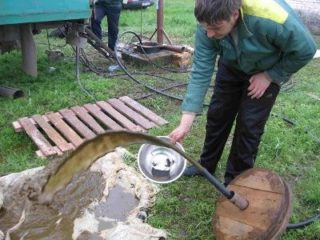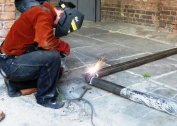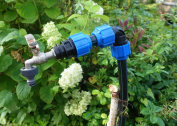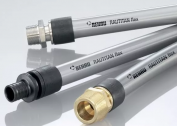The choice of season for the construction of a hydraulic structure depends not only on the wishes of the customer, but also on the type and characteristics of the future source. Artesian deep wells can be drilled at any time. To create them, equipment of increased power is used, and the flow rate does not depend on climatic features. When constructing Abyssinian wells and sand wells for a private house or cottage, the time of year should be taken into account.
Seasonality and well depth
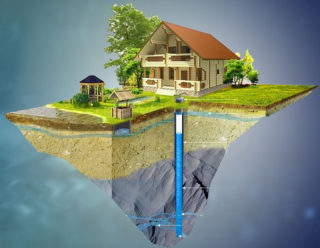
If the depth indicator of potential hydraulic construction is less than 25 m, the main factor that affects the selection of the season is the level of groundwater. If it is tall, the soil is saturated with moisture. All aquifers that are located close to the surface become full-flowing. This applies mainly to non-pressure water layers on which abyssin and sand wells are built.
In this case, the possibility of error increases sharply. It is possible to equip a well with excellent flow rate when the level of subsoil water is at the maximum mark. But in the dry period, the moisture will go away, and the source will lose productivity or completely dry out.
For boreholes with a depth of more than 25 m, the level of subsoil water is not particularly significant. But even in such a situation, in the moisture-rich seasons, there will be certain difficulties in performing the work. Heavy special vehicles with installations for drilling to the place of work will need to be reached on wet ground. If it is wet from melt snow or lingering rains, deep ruts will appear, and the cars themselves may become stuck.
Work in the summer and early autumn
The months from June to October are considered the best time to create well mines with a penetration to a shallow water horizon. Installation can be done independently, which is facilitated by such factors:
- Dry, stable land due to low rainfall and positive air temperature. Thanks to comfortable conditions, you can quickly drill a shaft even by hand. The absence of dirt on the roads pleases drivers of heavy special equipment.
- The water mirror in the source is at the lowest possible level. This gives a greater chance that the abyssine or well on the sand with sufficient water supply in the dry period will be with a high flow rate in any other season.
- Long daylight hours. Summer is the best time to do street work quickly. It is possible to engage in drilling operations or equip wells for 17 or more hours.
At this time, and pumping the already drilled source on the sand can be carried out without problems. The newly created well does not receive pure water, but a dirty liquid with admixtures of sand and clay. As a rule, pumping takes from several hours to a day, but few drillers will be ready to devote 24 hours to you. In such a situation, you need to perform further cleaning yourself. In summer, this is easier to do, since dry soil absorbs a significant amount of pumped liquid mud.
Landlords prefer to equip wells in the autumn after harvest, so that special equipment does not harm plantings, and does not flood contaminated water during flushing.
The disadvantages of drilling in the warm and dry season include long lines for work and high prices.Therefore, you must rely on your own strength or decide on the order and performers in the spring.
Also, in the southern regions, the earth shrinks and becomes dense, which makes manual work unnecessarily laborious.
Winter drilling
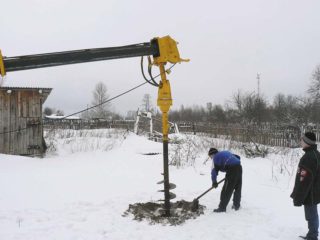
A significant level of soil freezing during severe cold weather makes work difficult. But if there is no severe cold, you can choose this option.
- It is easier to transport equipment and goods without damaging the surface layer of the soil.
- Thanks to the cold, the well’s shaft almost does not crumble, and its column is not clogged with dirt, which helps to reduce cleaning time.
- Errors in the calculation of the water horizon are minimal - a frozen top water does not interfere with the determination of the level of subsoil water and the installation point of the casing filter element.
The line of people who want to get a well and drillers' rates in winter is less than in summer. Thanks to this, it becomes possible to save money on a source of water supply. You can not think about where to put the clay solution, which will inevitably appear when drilling a mine, but rely on the action of spring water. It is recommended to make a water well in the winter in regions with a high level of subsoil sources, so that they do not interfere with the drilling of the mine.
If you decide to break through the water intake in the winter, by spring you will have a well that is already ready, which will significantly reduce the time for running the water supply in a country or personal plot.
The minuses of winter drilling include the limited depth of the mine - no more than 25 meters, as well as difficulties during the opening of the frozen soil layer.
Installation of hydraulic structures in spring and late autumn
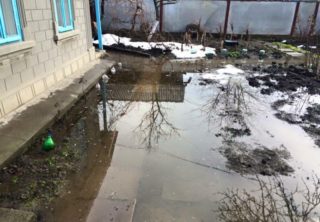
Professionals do not recommend drilling in the spring months because of the following nuances:
- Due to the flood and snowmelt in spring, there is an increase in the level of subsoil water, which leads to a change in water layers at a shallow depth. When punching the shaft, this can cause errors in finding the installation location of the casing filter element.
- Soaked and loose earth will create difficulties at the entrance of drilling and cargo equipment to the place of arrangement of the water intake.
- Wet soil will cause severe contamination in the well. It will take a long time and intensive methods to clean after punching.
The same goes for rainy autumn. Increased moisture concentration will significantly complicate drilling in wet soil. But if you choose when it is better to drill a well for water - in spring or late autumn - the latter option is preferable. There is no flood water, and for work you can pick up a dry day, which happens even in dank November.
Spring is well suited for arranging pipelines, clearing land, choosing the location of a future well shaft, punching method, and other preparatory work for the area, which will still have to be done.
In most parts of Russia, it is not possible to drill a mine from March to May, and in the northern regions from April to mid-June.
In areas with an arid climate, it is also not recommended to drill during the spring season, even if there is no flood. Subterranean waters are still unstable, their level is markedly increased, although visually it can be imperceptible.
Thus, you need to drill a well under water in the summer and early autumn. At this time, the presence of the water reservoir and its location are determined with great accuracy, the working conditions are more comfortable. It is realistic to plan for breaking through in the winter months, if terrible frosts are not expected, and the deadlines are running out. The most unsuitable season for drilling due to the flood and blurry driveways is spring.But all this applies only to wells and wells of shallow depth, artesians erect at any time of the year.

